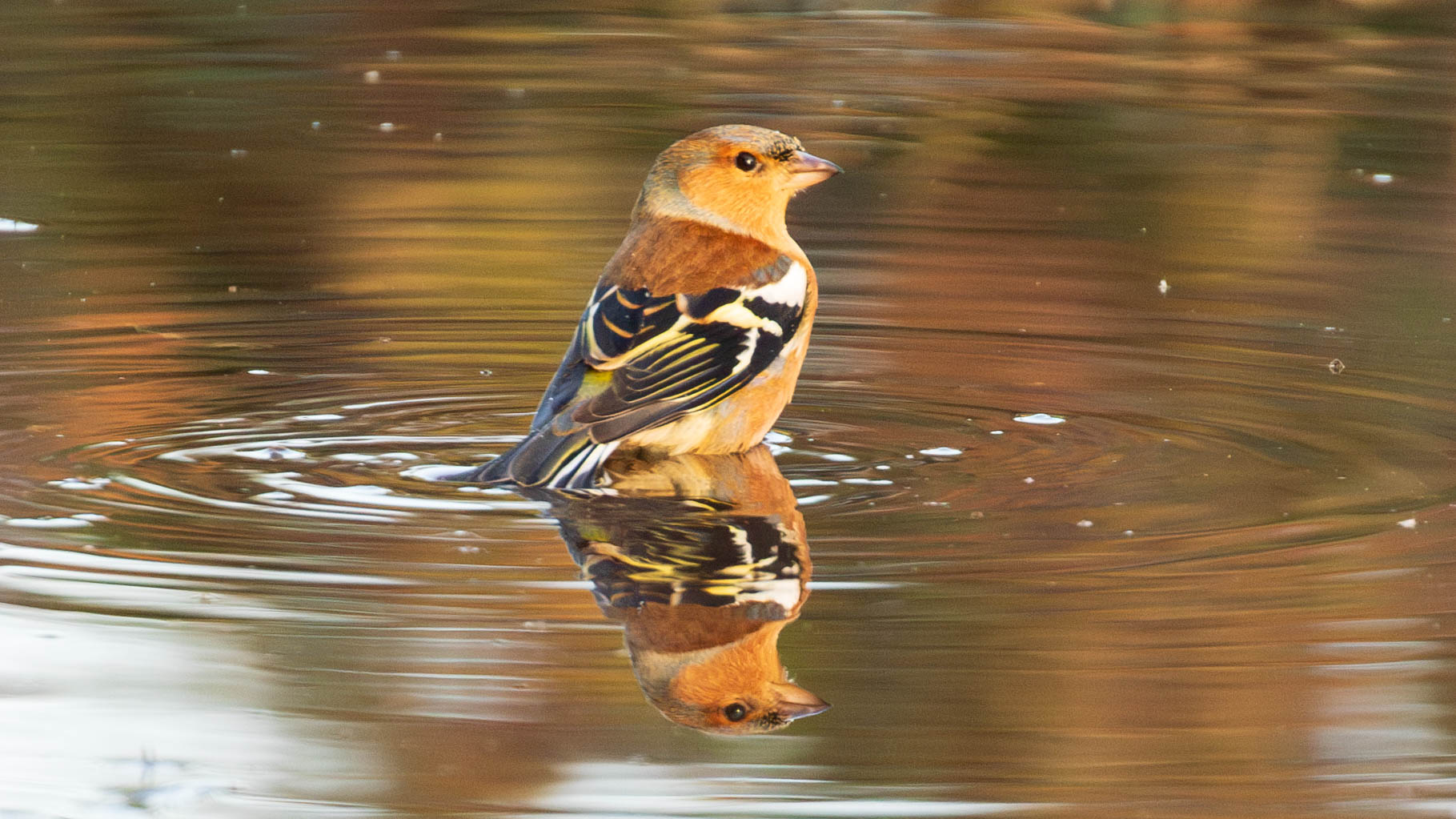What is a finch?

Finches are relatively small birds that can be found in almost every country in the world. In many countries, there are a few finches that are widespread, common and well known for example in the UK the Chaffinch is the fifth most common breeding bird.
Finches are usually social, rather than solitary, and many can be identified by their distinctive songs and calls. However, the main identifying characteristic of a finch is the bill: a big and very solid cone. This allows them to specialise in eating seeds for most of the year. The bill helps distinguish them from small birds which have comparatively small or thin bills such as the Wren, Robin and Dunnock.
From a scientific classification (i.e. taxonomy) point of view, finches are a family group of about 200 species worldwide. The slightly confusing thing is this scientific family group actually excludes a lot of birds we commonly call finches and it also excludes many birds that have the same cone shaped seed-eating bill. One way to think about this is to consider seven “finch-like” scientific family groups which are shown below, I have put the ending -idae in italics to help focus on the root of the family name:
- Fringillidae – The 200-or-so “True” Finches. The Latin word fringilla translates as finch.
- Passeridae – sparrows, including the House Sparrow
- Emberizidae – buntings
- Cardinalidae – cardinals and grosbeaks
- Estrildidae – estrildid finches, firefinches and parrotfinches
- Thraupidae – tanagers
- Ploceidae – weaverbirds or weaver finches
You don’t often see or hear about these scientific family groups, and therefore finch vs. “finch-like” is not a distinction most people need to make. However, it is interesting to consider why scientists have made this distinction, which is simply to say it reflects our understanding of how closely related these birds actually are to each other despite their similar appearance.
Scientific classification is an incredibly efficient way of organising literally billions of species and helps draw attention to similarities as you move down each level. We don’t hear about the family level very much because the Latin scientific name only uses the lowest two levels of taxonomy: the genus and the species. Here is an example using the Eurasian Bullfinch, giving us the scientific name Pyrrhula pyrrhula:
- Domain. Eukaryotes, very roughly = “complex” life.
- Kingdom. Animals.
- Phylum. Chordata, roughly = vertebrates.
- Class. Aves = birds.
- Order. Passerine = perching birds.
- Family. Fringillidae = “True” Finches.
- Genus. Pyrrhula = Bullfinches.
- Species. pyrrhula = Eurasian Bullfinch.
One other interesting thing to note is often (maybe always) scientists name family and genus “bottom up”: that is to say, they start with a species that is characteristic, or perhaps the most documented species, and they name genus and/or family after that species. This is why you often find scientific names that have the same word twice, such as the Bullfinch example above. It’s also why family names always end in -idae, because it distinguishes the family name from the genus name. In the case of Finches, it’s the Eurasian Chaffinch that has given the finch family it’s name. To illustrate this, these are the lower levels of scientific classification for the Eurasian Chaffinch (Fringilla coelebs):
- Order. Passerine = perching birds.
- Family. Fringillidae = “True” Finches.
- Genus. Fringilla = Finch.
- Species. coelebs = Eurasian Chaffinch.